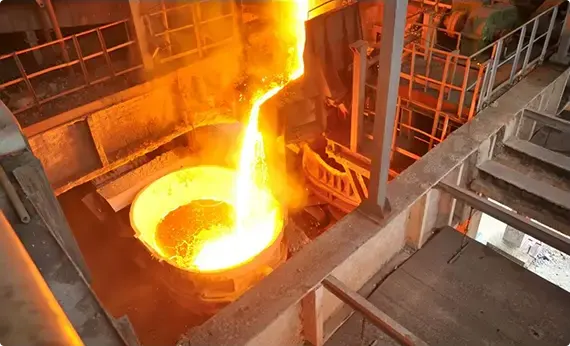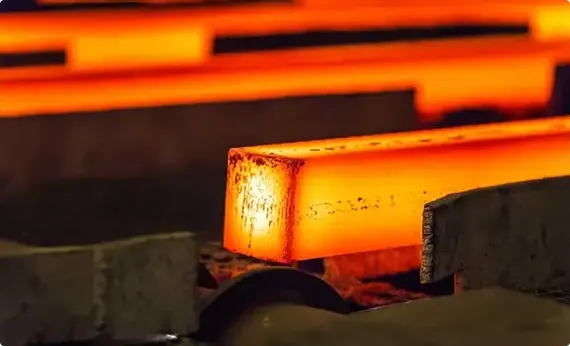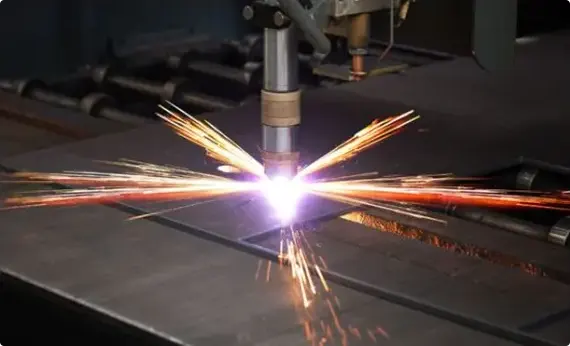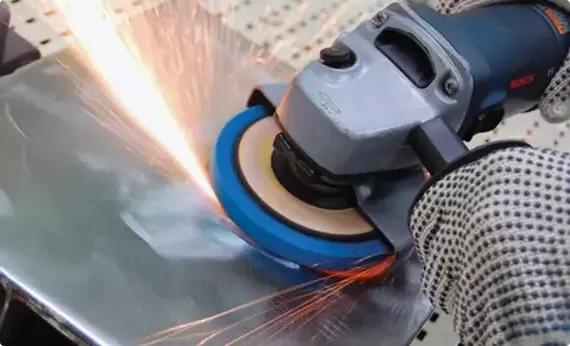
SUS 321 occupies an important position in stainless steel materials
1. Chemical composition and stability SUS 321 effectively solves the intergranular corrosion problem that conventional austenitic stainless steel is prone to at
1. Chemical composition and stability
SUS 321 effectively solves the intergranular corrosion problem that conventional austenitic stainless steel is prone to at high temperatures by adding titanium as a stabilizing element. The addition of titanium can preferentially form TiC carbides, preventing a large amount of network Cr23C6 from precipitating along the grain boundaries, thereby reducing the degree of chromium depletion at the grain boundaries and improving the intergranular corrosion resistance.
Specific metal chemical composition requirements include: carbon (C) not exceeding 0.08%, silicon (Si) not exceeding 1.00%, manganese (Mn) not exceeding 2.00%, phosphorus (P) not exceeding 0.045%, sulfur (S) not exceeding 0.030%, chromium (Cr) between 17.00% and 19.00%, nickel (Ni) between 9.00% and 12.00%, and titanium (Ti) content not less than 5 times the carbon content and not exceeding 0.70%.
2. Physical properties
SUS 321 has good physical properties, such as density (20℃) of 8.03 kg/dm³, melting point range of 1398~1427℃, specific heat capacity (0~100℃) of 0.5 J/(g·℃), thermal conductivity (100℃) of 16.3 W/(m·K), thermal conductivity (500℃) of 22.2 W/(m·K), linear expansion coefficient (0~100℃) of 16.6 × 10^-6/℃, and resistivity (20℃) of 0.72 Ω·mm²/m.
3. Heat resistance and corrosion resistance
SUS 321 exhibits good resistance to thermal expansion and stability in high temperature environments, and is not prone to deformation and plastic failure. It can resist oxidation up to 1500°F (about 816°C), mainly due to the protective oxide layer formed on the steel surface due to its high chromium content.
This stainless steel exhibits excellent corrosion resistance in a variety of chemical media, including acidic, alkaline and high chloride environments. Its high nickel content enhances its resistance to chloride stress corrosion cracking and is suitable for corrosive environments such as seawater and salt spray.
4. Processing and welding properties
SUS 321 stainless steel material is easy to form and cut during processing, and is easier to weld and braze, and is not prone to hot cracking. It can be welded and processed by standard workshop manufacturing practices, such as forging, rolling, extrusion, stretching, bending, forming, etc. It is recommended to use low-carbon filler metals such as ER347 or ER316L to avoid intergranular corrosion.
5. Application fields
SUS 321 is widely used in various industrial fields due to its excellent heat resistance, corrosion resistance and processing performance, especially in scenarios requiring high temperature and corrosion resistance. For example, in the petrochemical industry, it is used to manufacture valves, pumps, reactors and other equipment under high temperature and high pressure; in the chemical industry, it is used to manufacture equipment with high corrosion resistance requirements, such as pickling tanks, pipelines, storage tanks, etc.; in the aerospace field, it is used to manufacture engine internal components, high-temperature pipelines and jet propulsion.
stainless steel processing
The manufacture of stainless steel involves a series of processes. First, the steel is melted, and then it is cast into solid form. After various forming steps, the steel is heat treated and then cleaned and polished to give it the desired finish. Next, it is packaged and sent to manufacturers, who weld and join the steel to produce the desired shapes.

Melting and Casting
The raw materials that constitute a stainless steel item are placed together and melted in a giant electric furnace. Intense heat is applied rigorously for a period of 8 to 12 hours during this step. Once the melting is complete, the molten steel is cast into desired semi-finished forms. Some of the most common forms or shapes include slabs, blooms (rectangular shapes), billets (these could either be round or square), rods, and tube rounds.

Forming
In the second stage, the semi-finished steel shapes undergo a series of forming operations. For instance, the stainless steel is hot rolled (heated and passed through enormous rolls). The blooms and billets mentioned above are converted to bar and wire. The slabs on the other hand are formed into plates, strips or sheets. It is very common to turn semi-finished steel shapes into bars, as it is the most versatile stainless steel form (it comes in all grades and sizes). You have round, square, octagonal, and hexagonal bars, each suitable for a different type of application.

Heat Treatment
The various stainless steel forms undergo a thorough annealing process during this step. Annealing is another name for heat treatment where the stainless steel is heated and cooled in a controlled environment. The purpose of this heat treatment is to relieve the pent-up stress inside the stainless steel and soften the material to make it more suitable for a wide variety of applications. The people in charge of carrying out the annealing process have to be very careful about the conditions as even the slightest of changes in the temperature, pressure, duration, or cooling rate could result in a faulty product.

Descaling
During the annealing process, a certain amount of scale appears on the surface of the stainless steel. This scale can be removed using a number of different processes that are collectively known as descaling. Pickling is one of the more common methods of carrying out the descaling process.

Cutting
The semi-finished, heat-treated, and descaled stainless steel forms are cut into specific shapes in this step. Mechanical cutting is performed with the aid of guillotine knives, blanking, nibbling, and high-speed blades.

Finishing
Finishing is applied to help the stainless steel product achieve its signature aesthetically appealing appearance. Finishes are also needed to make the stainless steel product smooth and easier to clean, which is a top requirement in sanitary applications.
